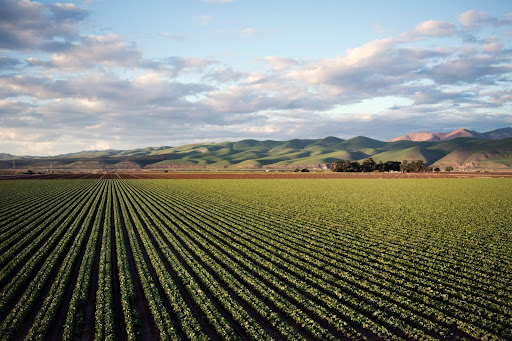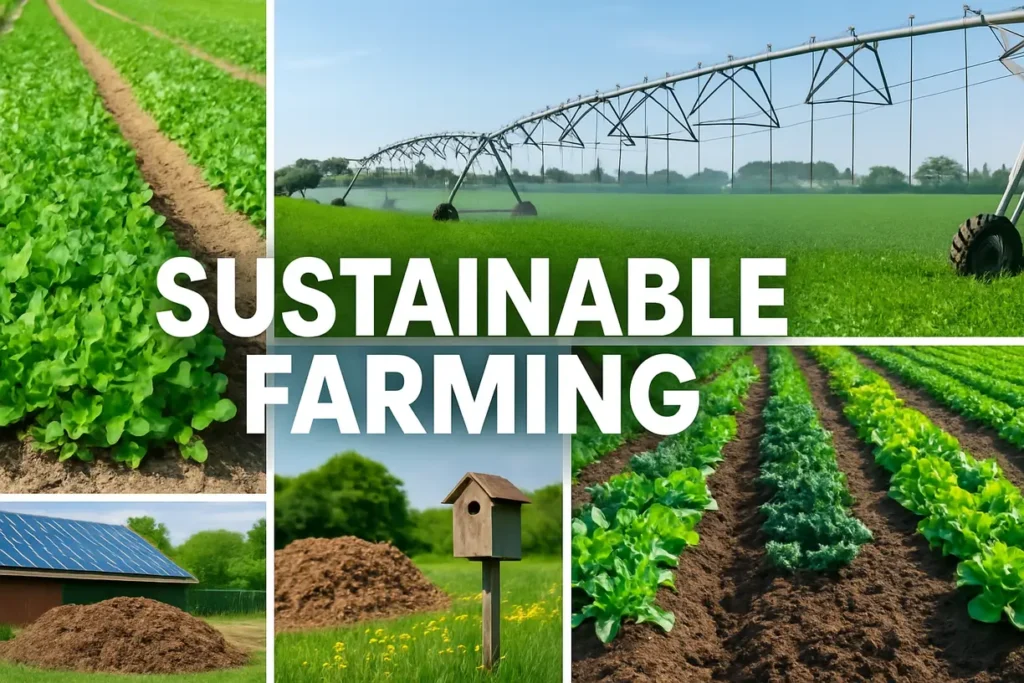Boosting Your Agriculture Business: What You Need to Know
Essential Strategies for Modern Agricultural Success and Sustainability

Every business owner, whether online or offline, is looking for an edge. They all need a boost to make their business successful, and those in the agricultural sector are no different.
In fact, business owners in agriculture will know better than most how important it is to be successful at what they do. Success in this case isn’t just about what you grow; it’s about how efficiently and sustainably you run your farm.
One way to help you make improvements and strides towards running the best business possible is to utilize technology and equipment to elevate your performance.
Treat It Like A Business
Empower yourself by treating your farm as a business. Just as you would strategize a digital marketing campaign, carefully plan your farm’s strategy to invest in the right resources. This approach puts you in control, allowing you to make informed decisions that will drive your farm’s success.
This means taking a leaf out of a marketer’s book and approaching operations using analytics and automation to improve ROI, identify which equipment and resources can help you improve, and boost efficiency.
The use of analytics can enable you to uncover what is working and what you need to change or improve, from introducing irrigation systems and soil health products to storage solutions, fencing, and more. Tracking and analysing data can uncover exactly what supplies and equipment you need.
Financial Planning and ROI Analysis
Before investing in any equipment or technology, it’s crucial to understand the financial impact on your operation. Modern farms that implement precision agriculture technologies typically see significant returns. Research shows that farmers adopting precision agriculture can expect yield increases of 4-15% while reducing input costs by 10-20%.
Key Financial Metrics to Track
Return on Investment (ROI) Calculations:
- Equipment ROI Formula: (Annual Savings + Increased Revenue – Annual Costs) ÷ Initial Investment × 100
- Technology Payback Period: Most precision agriculture investments pay for themselves within 2-5 years
- Per-Acre Profitability: Track profitability by field zones to identify your most and least profitable areas
Essential Financial Planning Components:
Cash Flow Management: Plan for seasonal fluctuations in income and expenses. Create monthly cash flow projections that account for planting, growing, and harvest cycles.
Scenario Planning: Develop financial models for different commodity prices, weather conditions, and yield scenarios. This helps you prepare for various market conditions and make informed decisions about crop insurance and risk management.
Budget Allocation: Allocate your budget across different categories:
- 40-50% for inputs (seeds, fertilizer, chemicals)
- 20-30% for equipment and technology
- 10-15% for labor and management
- 10-15% for contingency and improvements
Technology Investment Strategy
Start with high-impact, lower-cost technologies that provide quick returns:
| Phase | Timeframe | Technologies | Typical ROI |
|---|---|---|---|
| Phase 1 | Year 1-2 | GPS guidance systems and basic yield monitoring | 150-200% |
| Phase 2 | Year 3-4 | Variable rate application technology and soil testing | 120-180% |
| Phase 3 | Year 5+ | Advanced analytics, drones, and automated systems | 100-150% |
Transforming Traditional Farming with Technology
Modern agriculture is experiencing a technological revolution. Smart farming technologies, including artificial intelligence, automation, and the Internet of Things (IoT), are helping farmers meet the challenge of increasing food production by 70% by 2050 to keep pace with global population growth.
Core Precision Agriculture Technologies
GPS Guidance and Auto-Steering Systems:
- Reduce fuel consumption by 10-15%
- Minimize overlap and gaps in field operations
- Allow for precise field mapping and record-keeping
- Enable operations in low-visibility conditions
Yield Monitoring and Mapping:
- Create detailed yield maps showing field variability
- Identify high and low-performing areas
- Guide future planting and input decisions
- Track performance trends over multiple seasons
Soil Testing and Variable Rate Technology (VRT):
- Apply fertilizers and lime based on specific soil needs
- Reduce input costs by 10-25%
- Improve crop uniformity and yields
- Minimize environmental impact through precise application
Drone Technology and Aerial Imaging:
- Early pest and disease detection
- Crop health monitoring throughout the growing season
- Irrigation management and water stress identification
- Livestock monitoring and pasture assessment
Data Analytics Implementation
Data Collection Systems: Modern farms collect vast amounts of data from multiple sources:
- Soil sensors monitoring moisture, temperature, and nutrient levels
- Weather stations providing microclimate information
- Satellite imagery for large-scale crop monitoring
- Equipment sensors tracking performance and maintenance needs
Analytics and Decision Support: Transform raw data into actionable insights:
- Predictive models for optimal planting and harvesting times
- Prescription maps for variable rate applications
- Irrigation scheduling based on real-time soil moisture
- Pest and disease forecasting models
Case Study Example: A 1,000-acre corn and soybean operation in the Midwest implemented a comprehensive precision agriculture system and achieved:
- 12% increase in average yields
- 10% reduction in input costs
- 150% ROI within three years
- Improved soil health and reduced environmental impact
Implementation Roadmap
Getting Started:
- Assess your current technology and identify gaps
- Start with GPS guidance and yield monitoring
- Gradually add variable rate technology
- Implement data management systems
- Scale up to advanced analytics and automation
Training and Support: Invest in proper training for yourself and your team. Many technology providers offer comprehensive training programs, and agricultural extension services provide ongoing support for precision agriculture adoption.
The Business Case for Sustainability

Sustainable farming practices are no longer just environmentally responsible—they’re economically essential. When agricultural operations are sustainably managed, they can preserve and restore critical habitats, help protect watersheds, and improve soil health and water quality while maintaining profitability.
Core Sustainable Practices
Crop Rotation and Diversification:
- Break pest and disease cycles naturally
- Improve soil fertility through nitrogen fixation
- Reduce dependence on synthetic fertilizers
- Spread financial risk across multiple crops
Example rotation: Corn → Soybeans → Cover crop → Wheat
- Soybeans fix nitrogen for the following corn crop
- Cover crops protect soil and add organic matter
- Wheat provides additional income opportunity
Cover Crops and Soil Health: Cover crops provide multiple benefits:
- Prevent soil erosion and nutrient loss
- Improve soil structure and water infiltration
- Suppress weeds naturally
- Enhance biodiversity and beneficial insect habitat
Popular cover crop options:
- Legumes (clover, vetch) for nitrogen fixation
- Grasses (rye, oats) for erosion control
- Brassicas (radishes, turnips) for soil compaction relief
Conservation Tillage:
- Reduce soil disturbance and erosion
- Improve water retention and soil structure
- Lower fuel and labor costs
- Increase carbon sequestration
Integrated Pest Management (IPM):
- Monitor pest populations and beneficial insects
- Use biological controls and natural predators
- Apply pesticides only when economic thresholds are reached
- Rotate pesticide modes of action to prevent resistance
Water Conservation and Management
Precision Irrigation Systems:
- Drip irrigation for targeted water delivery
- Soil moisture sensors for optimal timing
- Variable rate irrigation based on field conditions
- Rainwater harvesting and storage systems
Water Quality Protection:
- Buffer strips along waterways
- Controlled drainage systems
- Nutrient management planning
- Constructed wetlands for water filtration
Environmental Benefits and Compliance
Regulatory Compliance:
- Meet environmental regulations and avoid penalties
- Qualify for conservation programs and cost-share assistance
- Maintain eligibility for crop insurance programs
- Prepare for increasing environmental regulations
Market Advantages:
- Premium pricing for sustainably produced products
- Access to environmentally conscious consumers
- Certification opportunities (organic, sustainable, etc.)
- Supply chain requirements from major food companies
Economic Benefits of Sustainability
Input Cost Reduction:
- Reduced fertilizer needs through soil health improvement
- Lower pesticide costs through IPM practices
- Decreased fuel consumption from reduced tillage
- Water savings through efficient irrigation
Long-term Profitability:
- Maintained or increased yields over time
- Improved soil productivity and resilience
- Reduced production risks and volatility
- Enhanced property values
Government Support: Take advantage of conservation programs:
- Environmental Quality Incentives Program (EQIP)
- Conservation Reserve Program (CRP)
- Conservation Stewardship Program (CSP)
- Regional conservation partnerships.
Implementation Strategy
Your roadmap to sustainable agriculture success
Foundation Building
- Soil testing and nutrient management planning
- Establish cover crop programs
- Begin conservation tillage practices
- Implement basic IPM strategies
System Integration
- Expand crop rotation systems
- Add precision irrigation technology
- Develop wildlife habitat areas
- Create comprehensive conservation plans
Optimization
- Fine-tune practices based on results
- Explore certification opportunities
- Develop direct marketing channels
- Share knowledge with other farmers
Implementation Progress
Phase 1: Foundation Building (33%)
Benefits of Quality Farming Supplies
What exactly are the benefits of investing in quality farming supplies?
Whilst high-quality equipment can come with a greater initial cost, the many benefits can make it a worthwhile investment.
- The right tools can help you increase productivity, save time and labor, and get more done with less effort.
- Improved crop and livestock health—By investing in nutrient-rich feeds, disease control products, and sustainable fertilizers, you can contribute to healthy yields throughout the year, elevating the quality of the produce.
- Investing in quality farming supplies provides a sense of security. While they may require a larger upfront investment, the reduced risk of failure, breakage, or the need for replacements ensures a consistent standard of production over time. This reassurance makes the investment worthwhile and boosts your confidence in your farm’s operations.
By using modern equipment that meets environmental and safety standards, you can ensure compliance and safety on your farm. This not only protects your brand, workers, crops, and livestock but also provides peace of mind. Knowing that you are up to date with safety procedures and fully compliant in all areas allows you to focus on your farm’s productivity confidently.
Finding A Supplier
It doesn’t matter if you manage just a small holding or a large-scale farm; it is really important to source the right products.
You need to find a supplier or an agricultural store near me that offers high-quality, durable materials, transparent pricing, excellent delivery options, guidance, customer support, and most importantly, products suited for your specific climate or crop and livestock type.
The more suitable a supplier’s products are to you and the more they know about what you do, the easier it will be to implement the right technology and equipment for your farm.
Key Supplier Selection Criteria
Essential factors for choosing the right agricultural technology partner
Technical Expertise
Deep knowledge in precision agriculture and sustainable practices to guide your technology adoption journey.
Training & Support Programs
Comprehensive training programs for new technology adoption to maximize your investment returns.
Local Presence
Timely service and support when you need it most, especially during critical farming seasons.
Financing Options
Flexible payment plans and financing solutions to help manage technology investments without cash flow strain.
Product Integration
Seamless system compatibility ensuring all your agricultural technologies work together efficiently.
Bottom Line
Success in modern agriculture requires treating your farm as a comprehensive business that balances profitability, sustainability, and technological advancement. By implementing strategic financial planning, embracing precision agriculture technologies, and adopting sustainable farming practices, you can build a resilient operation that thrives in today’s competitive agricultural landscape.
The farms that will succeed in the future are those that invest wisely in quality equipment, leverage data-driven decision making, and prioritize long-term sustainability over short-term gains. Start with a solid business plan, choose the right suppliers and technologies for your specific needs, and continuously adapt to changing conditions while maintaining focus on both environmental stewardship and financial success.
Remember: the goal isn’t just to grow crops or raise livestock—it’s to build a sustainable, profitable business that can adapt to challenges and capitalize on opportunities for generations to come.
